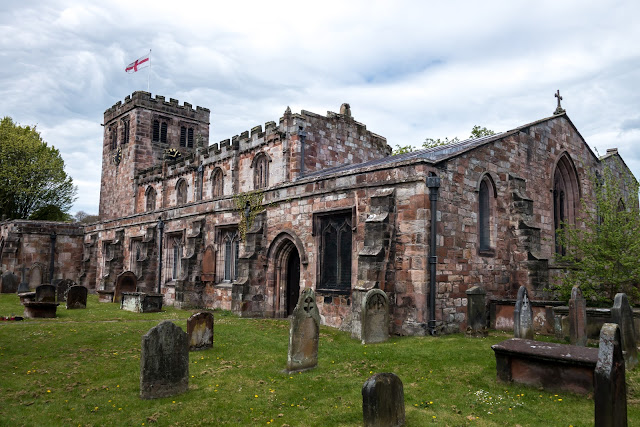Next day it was off to Broughton-In-Furness for some shopping and continue onto Coniston. Broughton-In-Furness was the town nearest to us and the obvious port of call for groceries etc. As we had to pass through it, a stop and quick look around was our first objective for the day.
St Mary Magdalene's Church, the oldest fabric in the present church is the late Norman south doorway, dating from the 12th century Alterations and additions were made to the church in the 16th and the 19th centuries. So, like many English churches, not obvious which parts are really old from those reworked by the Victorians!
Just a street name but when you see a name like this, the mind does wonder where it came from.
The road between Ulpha and Broughton is a nightmare after the wide roads of East Anglia, although with stunning views. I suppose you cannot have it all. When we first stepped out of the car, our reaction was `where are the shops`, a short wander later and we found all we wanted. Pictures above are St Mary Magdalene's Church, Broughton-in-Furness and the sun dial in the market square.
Shopping done we then headed up the side of Lake Coniston toward the town itself, finding a parking spot right at the top end of the lake. We walked back to the town and had a short wander but the town is nothing to shout, about I thought. A great lunch of Sea bass followed by a walk along some of the lake and back to the car.
Coniston Water in Cumbria is the third largest lake in the English Lake District. It is five miles long by half a mile wide (8 km by 800 m), has a maximum depth of 184 feet (56 m)
I suppose many people, like myself, always associate Coniston Waters with Donald Malcolm Campbell, the British speed record breaker who died during a speed record attempt at the Lake in 1967.
The top end of Coniston Waters
Just having a rest mum
The backdrop to the town of Coniston
View of someone`s Pad at the top of the hill.
We then drove down the eastern side with the odd stop or two when we took a few photos. Home through the very winding roads and to a well earned rest. Another really beautiful day even if the wind was a little chilly at times. Not anything much to see on the water but a beautiful area nonetheless.





















































